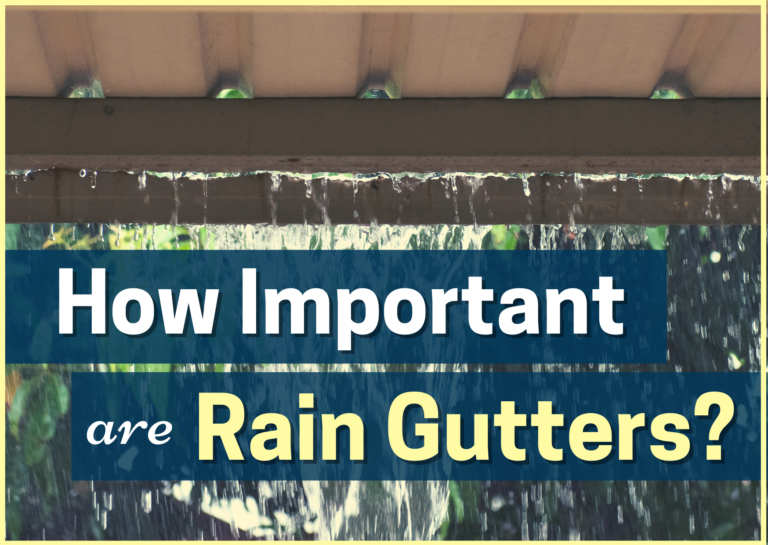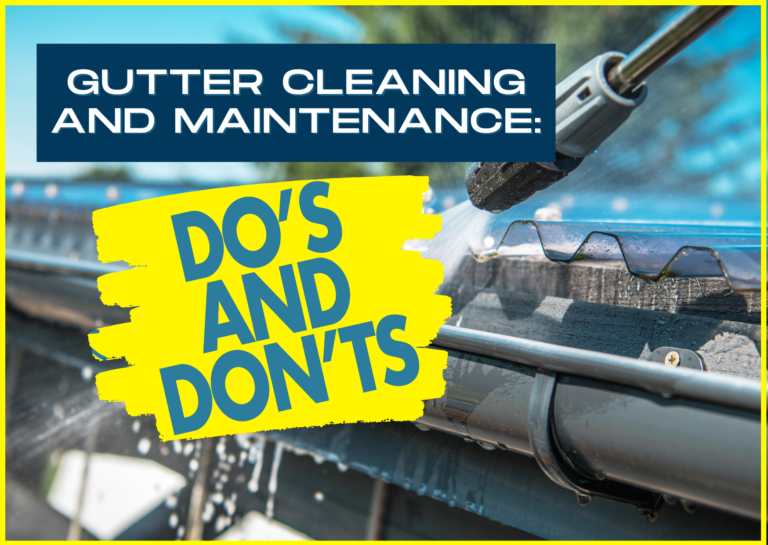When a homeowner decides to build or upgrade their property, several elements need to be considered, such as the appropriate type of rain gutters installed for the house. Even if this aspect is not usually given so much thought, guttering has a critical purpose in keeping the place’s aesthetics free from mold formation, watermarks, and flooding, along with the gutter system keeping the extra rain run off from pooling at the bottom of your house causing foundation damage. Hence, building contractors always emphasize to install a good quality gutter system and not disregard them in any home improvement project.
A Crowd Favorite: The K-Shaped Gutter
Modern houses typically use the K-shaped gutter. It is one of the most preferred because of its decorative form, like the crown molding seen on the interior ceiling. Several homeowners are attracted to its curvier appearance, which doesn’t seem like a conventional gutter. Aside from its fascinating shape, it can hold a huge amount of rainwater, more than the capacity of half-round types. This is ideal for those living in locations with heavy rains.
Another key feature is, it is available in five and six inch sizes, along with seven inch K-style for commercial uses. Gutter installers can even build the K-shaped gutter on the spot to perfectly fit a house’s specific gutter requirement, called seamless gutters, being that there are no seams on the long runs. That being said, there are seams at all the corners, only the long runs are seamless. Its unique form makes it harder to form a dent or protrude when hit by a strong force. The K-shaped gutter typically uses aluminum, but there are also galvanized steel that are not used anymore, because they rust, vinyl, which can still be bought in hardware stores, and copper, which is costly, and Aluminum, which are the most common these days, and do not tend to rust.
What Materials Are Used in Making Gutters?
The material used for gutters come in several various colors, so contactors can perfectly match the type of facia and customers taste for the property–modern or traditional. Professional gutter installers are careful in choosing this aspect of the gutter system since it doesn’t only set the appearance but, most importantly, the gutter’s durability itself.
Aluminum
This is the typical material found in most gutters nowadays since it is lightweight and has easy-to-install features. Also, aluminum-based gutters are less likely to have corrosion issues on their exterior. Its color is versatile enough to match with the existing gutters making it easy for gutter installers to cut and install it on the spot.
Copper
Homeowners who don’t want to deal with mold issues should go for copper gutters. This will prevent them from paying costly repainting jobs too. Most gutter professionals recommend this type because it can dramatically affect the aesthetics of the property. However, they also warn homeowners that this may not be as durable as its aluminum counterparts. Any heavy items that fall, such as trees or branches, can quickly dent or damage them. These gutters can be expected to cost more in the up front cost for the material.
Galvanized Steel
Gutters made of galvanized steel may appear to be sturdy since they are protected with a zinc layer, but they are prone to rust issues. Early signs of scratches and dents must immediately be repaired and handled by a professional gutter company. Even its installation shouldn’t be done by homeowners alone or inexperienced roofers since the weight is too heavy. But these gutters can easily be painted should the property owner has a preferred color. Galvanized gutters can still be purchased, but are not the used as much as aluminum these days.
Vinyl
Vinyl gutters consist of robust plastic that is strong enough for corrosion, bending, or dent issues. Those properties built in areas that are prone to extreme weather conditions and often have storms must use these gutters. Homeowners don’t have to think of regularly cleaning it every time it rains. It has a lightweight feature that allows for a quick installation. These can’t be scratched either because they are not painted. Hence, roofers find this type to be the most low maintenance, among others.
Sectional vs. Seamless: Which one is the right for your house?
Sectional
Sectional guttering is common for homeowners who love DIY home projects. The installation is pretty straightforward, which can be done without any high-end specialized tools. The small gutters can be connected, forming a bigger section of the system. Even if they’re usually made of steel, aluminum, or vinyl, property owners who don’t want to deal with rusty gutters in the future choose those that use non-steel materials. Over time, the seems will more than likely start to leak, being that the seams are sealed with a sealant of some sort, that dries out over time. You can fix this by taking the old out, and putting new sealant in where the seams are.
Seamless
Seamless gutters are also known as continuous gutters. These types are guaranteed to have no leakage concerns or failure points since they’re made of single-coil aluminum that went through a specialized treatment to prevent any erosion problem. It may cost a bit more, but roofers can vouch that it is a worthwhile investment. Moreover, this is something best handled by a professional gutter installer to guarantee proper installation with its value. Only the long runs have no seams, the corners do have seems. The corners are called miters, you have inside, and outside miters, that have to be cut at the correct angle. We add a miter strip to fix the miter together. Some gutter guys can fold the corners to look like they are seamless without the miter strip. There is however a seam there with some sort of sealant to stop it from leaking.
Gutter Issues: What Are The Common Gutter Problems?
Gutters are not spared from the normal wear and tear, just like any other part of the house. Homeowners can proactively prevent or delay the inevitable if they are aware of the typical gutter issues. It is good to clean your gutter system at least once a year if you have lots of trees around. A stopped up gutter is not a good working gutter, and can cause more damage than not having any gutters.
Blocked gutters
When homeowners experience clogged gutters, it forfeits having one since the rainwater can flood the property. The debris and dirt washed away by strong storms will quickly accumulate inside and block the entryway for the water.
Leakage
Gutters can have leaks that are commonly found in joints and seams. Initially, these leaks can be repaired by applying a sealant, but if this has worn off too, then perhaps it’s best to install a new one. Peeled or damaged paint can cause corrosion as its metal substrate has been exposed and eventually lead to a leakage problem.
Improper downspouts installation
Downspouts are crucial to the gutter system and must not be taken for granted. When these are improperly installed, it can cause leakage. The runoff end must be far enough from the exterior wall so the water will not flow back to the property. Otherwise, there will be visible watermarks left or formed on the foundation. Some can even be absorbed by the basement wall, which can, later on, lead to mold formation.
Incorrectly pitched gutter slopes
There is a correct way to install gutter troughs, and it should be slightly positioned down, facing the downspouts. When the installer fails to follow such procedures, it can cause water puddles and prematurely damage the seams and joints.
Insufficient gutter system
Some properties don’t have a gutter system, which undoubtedly brings a huge problem for the owner. It is essential to install appropriate gutters to protect the property from potential damages caused by rainstorms or fallen leaves.
Why Do You Need To Clean The Gutters?
Every part of the gutter system plays an essential role in the entire process. Hence, even a tad mistake can lead to a catastrophic dilemma for the house. Maintaining the gutter system by ensuring it is cleaned regularly is a must.
Avoid hovering pests
Blocked gutters are potential nesting sites of mosquitoes and other pests. These pests are annoying, unsanitary, and can cause serious illnesses.
Prevent damaging the roof
Clogged gutters can cause flooding that may lead to having a rotten roof. This is very common in properties where homeowners ignore the early signs of dirt-filled gutters. Such damage can also be costly because they have to pay for two repair jobs–roof and gutter–instead of just paying someone to clean the gutters regularly.
RELATED: Inside Miter And Outside Rain Gutter Miter: What Are They?


